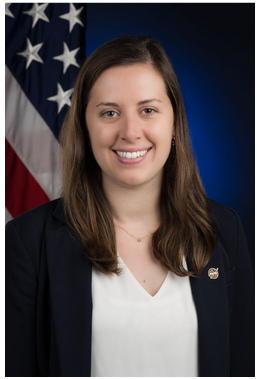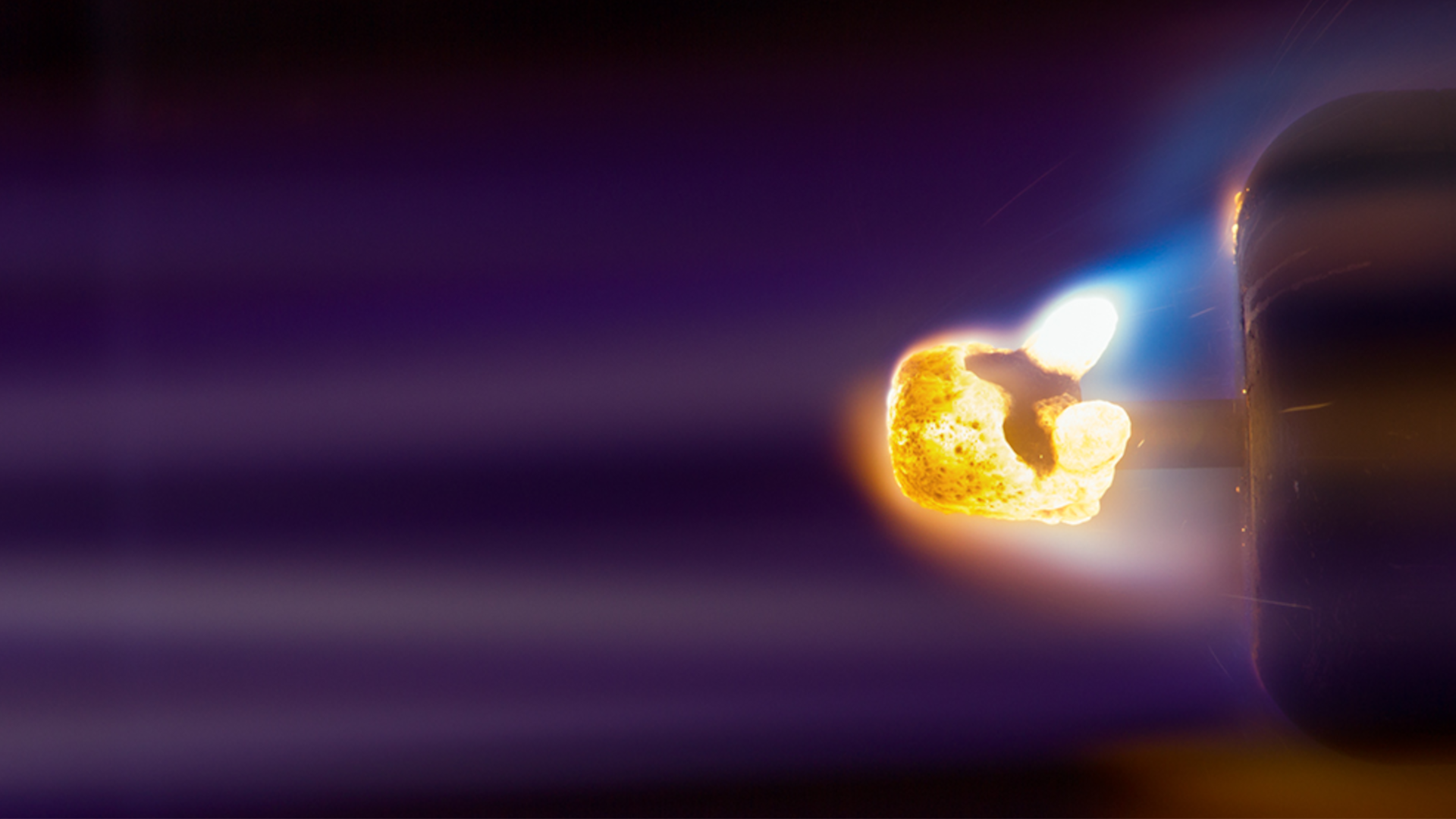Opening Session:
Michelle Munk NASA STMD Land Domain Formulation Lead Mrs. Michelle Munk has served as NASA’s Entry, Descent and Landing (EDL) Systems Capability Leader (SCL) since May 2017, and the Principal Technologist for EDL technologies within NASA’s Space Technology Mission Directorate (STMD) since 2013. On detail to NASA Headquarters, Ms. Munk advises NASA leadership to ensure sustainment of NASA’s EDL skills, facilities, and tools, and guides STMD’s technical content in EDL. Mrs. Munk advocates for new investments to close technology gaps and coordinates across technology readiness levels, commercial and academic activities, and robotic and human exploration planning efforts. In 2024, Mrs. Munk was appointed as the Domain Formulation Lead for the “Land” domain within the reorganized STMD. She is responsible for recommending the new domain structure, operations, and content.Mrs. Munk has over 35 years of experience in orbital mechanics, EDL trajectory simulation, flight hardware development, and technology management from four different NASA centers. She was the Principal Investigator for two Stereo Cameras for Lunar Plume Surface Studies (SCALPSS) payloads that were delivered to the lunar surface in 2024 and 2025. Mrs. Munk’s past work includes nine years as the Lead Engineer and Project Manager for the In-Space Propulsion Technology (ISPT) Aerocapture project, and Deputy Project Manager and subsystem lead for the Mars Science Laboratory Entry, Descent and Landing Instrumentation (MEDLI) flight payload.Mrs. Munk holds a B. S. in Aerospace Engineering from Virginia Tech, and she started her career as a cooperative education student at the Johnson Space Center. She is an AIAA Associate Fellow and has several publications and NASA group and individual achievement awards, including the Space Flight Awareness Award, the NASA Exceptional Service Medal, the NASA Technology Achievement Medal, and the 2020 Alvin Seiff Award. |
| “Innovating NASA Entry Systems: Addressing Needs and Exploring the Future” Ethiraj Venkatapathy NASA Senior Technologist for Entry System Technologies Ethiraj Venkatapathy, known as „Raj,“ has served as NASA Senior Technologist for Entry System Technologies for the past eight years. He also holds the position of Chief Technologist within the Entry Systems and Technology Division at NASA Ames, a role he has fulfilled for over 23 years. Currently, his work focuses on advancing entry systems and technologies for the commercial space industry, developing thermal protection systems (TPS) for robotic in-situ science missions—including aerocapture—and mentoring the next generation of technologists. From 2010 to 2019, Raj successfully led NASA’s advanced TPS development, leveraging innovative 3-D weaving techniques. In 2015, he spearheaded the creation of the multi-functional ablative TPS known as 3DMAT, which enabled the Orion Lunar mission design and was successfully tested on Artemis I. 3DMAT was recognized as NASA’s Innovation of the Year in 2023. Additionally, Raj directed the development of the Heatshield for Extreme Entry Environment Technology (HEEET), a dual-layer TPS designed for future Venus, Saturn, and Ice Giant missions. A variant of HEEET is currently the preferred TPS for the Mars Sample Return Earth Entry System. Raj is also the inventor of the deployable heatshield technology known as ADEPT, which utilizes 3-D weaving.Earlier in his career, Raj served as the Flight System Manager for the Orion Advanced TPS Development Project (2005–2009). Before joining NASA in 2002, he was President and Director of Research at ELORET, a small company where he led a team of researchers supporting NASA Ames across various disciplines for over 20 years. Raj’s contributions have been widely recognized through numerous prestigious awards. In 2024, he received the Presidential Rank Award, and in 2022, he was honored with the IPPW’s Al Seiff Award. He is a two-time recipient of NASA’s Outstanding Leadership Medal (2007, 2010) and has been awarded the Exceptional Technology Achievement Medal (2012), the “NASA Game Changer of the Year” Award (2015), and the “STMD Leadership” Award (2015). These accolades highlight his pivotal role in advancing revolutionary technologies for NASA and the nation. Raj is an Associate Fellow of both AIAA and NASA Ames Research Center. He received his B.Tech. in Aeronautical Engineering from Indian Institute of Technology Madras in India and his Ph.D. in Aerospace Engineering from Iowa State University, Ames, Iowa in 1982. |
 | Erica N. Montbach Manager for Planetary Exploration Science Technology Office (PESTO) As the Manager for Planetary Exploration Science Technology Office (PESTO), Dr. Erica Montbach, develops the technology investment strategy for future planetary science missions, manages all pre-mission planetary science technology development, coordinates with other technology development programs, and infuses technology into planetary science. Erica’s experience has focused on research and development, entrepreneurship, small business innovation, industry trend analysis, public private partnerships, patent portfolio maturation, and grants management. Her technical background includes designing advanced manufacturing environments, materials development, creating flexible electronics, and evolving display technologies for consumer products. Erica has co-authored a published book chapter, written over 35 technical papers, 22 patents, and presented on technical results along with technology direction and program management. Dr. Montbach has a B.A. in Physics from The College of Wooster, an M.S. in Physics from Colorado State University, and a Ph.D. in Chemical Physics from the Liquid Crystal Institute at Kent State University. |
Aeroassist, Entry, Descent, and Landing:
Austin Briggs CTO & Co-Founder, Inversion Austin Briggs is the co-founder and CTO of Inversion, an aerospace startup dedicated to building low-cost reentry vehicles capable of delivering cargo anywhere in the world in under one hour. He is responsible for the development of Inversion’s first pathfinder vehicle, Ray, which launched to space in January 2025. Ray is the lowest cost fully functional reentry vehicle ever developed. In addition, Austin leads product development for Arc, Inversion’s next-generation maneuverable reentry vehicle capable of enabling ultra-fast global delivery, low-cost hypersonic testing, and in-space reusable platforms. Inversion has raised over $55M of venture capital and was also selected for a $71M contract with the USAF and USSOCOM. Prior to starting Inversion, Austin spent his career as a propulsion engineer developing experimental rocket, jet, and detonation engines. Notably, he was the responsible engineer for a 15,000 lb (67 kN) thrust upper-stage orbital rocket engine at ABL Space Systems. |
Innovative Concepts for Exploration:
Sebastian KlausCEO , ATMOS Space Cargo Sebastian Klaus, has a background in aerospace and defense. His passion for EDL started with his bachelor thesis at the Institute of Space Systems Stuttgart on MIRKA-2 reentry probe. He founded KLAUSS Space Transportation (renamed to ATMOS Space Cargo) in 2021. Forming a team with experiences from NASA, ESA, JAXA, DLR, ArianeGroup and Airbus, ATMOS aims to launch its Phoenix capsule in the next years. |
Titan and Airless Bodies:
| “The Dragonfly New Frontiers Mission to Titan : 9 Years since Formulation” Ralph Lorenz Dragonfly Mission Architect Ralph Lorenz is a planetary scientist at the Johns Hopkins Applied Physics Lab, specializing in the interaction of vehicles and instruments with planetary surfaces and atmospheres. Hehas worked on European, Japanese and NASA missions to Mars, Venus and Titan, is the Mission Architect of the Dragonfly New Frontiers mission and leads the Atmospheric Structure Investigation on the DAVINCI mission. He has over 300 refereed journal publications and has authored ten books including „Titan Unveiled“, „Spinning Flight“ and „Space Systems Failures“. |
Mars:
| “Mars Exploration at ESA” Dr. Albert Haldemann Mars Chief Engineer, ESA Dr. Albert Haldemann has been the Mars Chief Engineer in the Mars and Beyond Projects Group since 2021 at ESA. The Chief Engineer, inter alia, tracks technical and technological implemen-tation risks across ESA’s Mars programmes—ExoMars Rosalind Franklin Mission and Mars Sample Return.Albert joined ESA in 2007 as the Payload and AIV Manager for ExoMars, overseeing implementation of fourteen flight instruments for Trace Gas Orbiter, Schiaparelli and the Rosalind Franklin Rover. He supervised all integration, testing, and verification for ExoMars 2016 and ExoMars 2022. Prior to ESA, he worked at the Jet Propulsion Laboratory from 1997 to 2007, mainly on Mars, and so has contributed to five of the eleven spacecraft attempting Mars landings since 1997. His keynote will recap ESA’s past missions to the red planet, and their lessons, as well as outline the Agency’s proposed Explore2040 plans for Mars. |
Earth and Moon:
| “Blue Ghost Lunar Landing, to the Dark Side, and Beyond” Benjamin Tackett, Systems Engineer, Blue Ghost – Firefly Aerospace Ben is a prior NASA hypersonic flight mechanics engineer, current commercial New Space systems engineer, and the lead systems operator for the Blue Ghost lunar program at Firefly Aerospace. In addition to Blue Ghost, Ben has been a part of the Mars Sample Return initiative for development of the Earth Entry Vehicle, supported Aerocapture and Aerogravity-Assist initiatives, and completed multiple Verification & Validation efforts for the Artemis program with the NESC. Ben completed his education at Purdue University, focusing on hypersonic mission design, re-entry trajectory guidance and optimization, and aerospace systems engineering. |
Ice and Gas Giants:
| “Exploring Giant Planets: Advantages of Combining In-Situ and Remote Sensing” Dr. Scott Bolton Associate VP, Southwest Research Institute, Principal Investigator, Juno Scott Bolton is the Principal Investigator of NASA’s Juno mission to Jupiter, which launched in 2011. The Juno spacecraft entered Jupiter orbit in 2016, making discoveries that have since rewritten the textbooks about the gas giant. Bolton has more than 30 years of experience in aerospace and space science, with experience in mission design and engineering to scientific research and program management. He was a member of the technical staff at NASA’s Jet Propulsion Laboratory for 25 years prior to joining the Southwest Research Institute. He attended the University of Michigan, Caltech, and the University of California at Berkeley. He leads several educational programs spanning elementary through university levels. His lifelong pursuit to advance the intersection of art and science has led to collaborations with numerous artists, record companies, and production companies. |
Venus:
| Mark Wallace VERITAS Mission Design Manager, Jet Propulsion Laboratory Mark Wallace is a Mission Design Engineer in the Mission Design & Navigation Section at the Jet Propulsion Laboratory and is presently serving as the Mission Design Manager for the VERITAS mission to Venus, having led the Mission Design & Navigation development since the project’s conception. He was previously the Lead Trajectory Analyst for the InSight mission to Mars, the primary mission designer for the GRAIL Extended Mission at the Moon, and the Mission Design Chair Lead for the Advanced Projects Development Team, or Team X. These are in addition to supporting over a dozen flight projects in smaller roles and innumerable mission concepts across the solar system and at every project scale. A JPLer since 2000, he received BS in Aeronautical & Astronautical Engineering from the University of Illinois at Urbana-Champaign and an MS in Aerospace Engineering from the University of Texas, Austin. |
| Mark Wallace VERITAS Mission Design Manager, Jet Propulsion Laboratory Mark Wallace is a Mission Design Engineer in the Mission Design & Navigation Section at the Jet Propulsion Laboratory and is presently serving as the Mission Design Manager for the VERITAS mission to Venus, having led the Mission Design & Navigation development since the project’s conception. He was previously the Lead Trajectory Analyst for the InSight mission to Mars, the primary mission designer for the GRAIL Extended Mission at the Moon, and the Mission Design Chair Lead for the Advanced Projects Development Team, or Team X. These are in addition to supporting over a dozen flight projects in smaller roles and innumerable mission concepts across the solar system and at every project scale. A JPLer since 2000, he received BS in Aeronautical & Astronautical Engineering from the University of Illinois at Urbana-Champaign and an MS in Aerospace Engineering from the University of Texas, Austin. |
 | Olivia Tyrell Research Engineer, NASA Langley “STEREO CAMERAS FOR LUNAR PLUME-SURFACE STUDIES: PRELIMINARY RESULTS FROMBLUE GHOST MISSION 1” Olivia Tyrrell is a Research Engineer in the Advanced Measurements and Data Systems Branch at NASA Langley. She has been working on the Stereo Cameras for Lunar Plume-Surface Studies (SCALPSS) team since 2021 to develop flight and ground test instrumentation for lunar and Martian exploration. She is interested in vision-based and laser-based measurements for entry, descent and landing relevant environments. |

